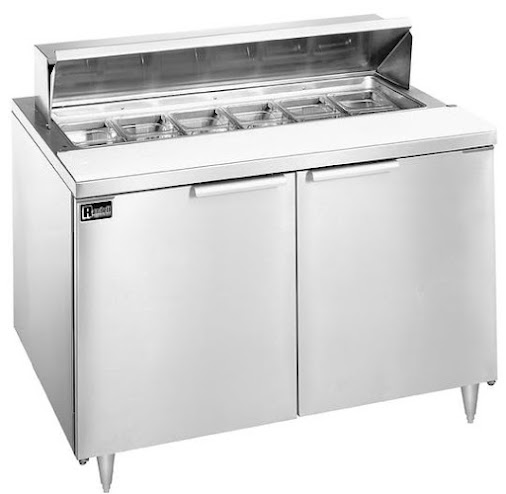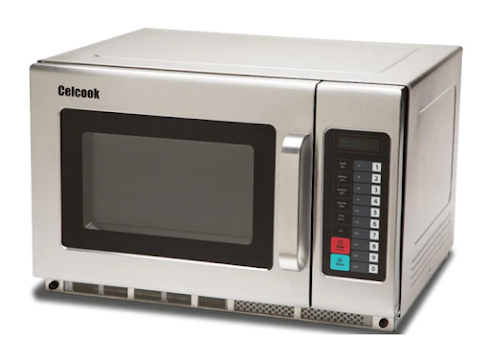The Heart of the Kitchen: Essential Restaurant Cooking Equipment for Success
Essential restaurant cooking equipment is the backbone of any successful eatery. Discover key pieces, their roles, and how they drive kitchen efficiency and culinary excellence.
In the bustling world of the culinary industry, the kitchen is undeniably the heart of any restaurant. And at the core of this vibrant space lies its most crucial component: the restaurant cooking equipment. From sizzling grills to precise ovens, the tools a chef wields directly impact the quality, consistency, and efficiency of every dish served. Investing in the right equipment isn't just about functionality; it's about building a robust foundation for culinary excellence, operational efficiency, and ultimately, a thriving business. This blog post delves into the essential categories of restaurant cooking equipment, highlighting their vital roles in a professional kitchen and offering insights into how strategic choices can lead to a recipe for success.
The Fundamental Categories of Restaurant Cooking Equipment
A commercial kitchen is a symphony of specialized stations, each demanding specific tools. Broadly, restaurant cooking equipment can be categorized into a few key areas:
-
Ranges and Ovens: The Versatile Workhorses
- Commercial Ranges: These are the backbone of many kitchens, offering multiple burners (gas or electric) for sautéing, simmering, and boiling, often with an oven base.
- Open Burner Ranges: Provide direct flame and instant heat control, favored by chefs for their responsiveness.
- Flat-Top Grills/Griddles: Offer a large, even cooking surface, perfect for pancakes, eggs, burgers, and searing.
- French Top Ranges: A solid, continuous surface where heat is strongest in the center and diminishes outwards, allowing for precise temperature zones.
- Commercial Ovens:
- Convection Ovens: Use fans to circulate hot air, ensuring even cooking and faster roasting, baking, and re-therming. Essential for high-volume operations.
- Deck Ovens: Often used for pizzas or baking, providing consistent heat from both top and bottom for a crisp crust.
- Combination Ovens (Combi-Ovens): A versatile powerhouse, combining convection heat with steam. They can roast, bake, steam, blanch, and even sous vide, offering incredible flexibility and often replacing multiple pieces of equipment.
- Salamanders/Broilers: Overhead heating elements ideal for quickly browning, melting cheese, or finishing dishes.
- Commercial Ranges: These are the backbone of many kitchens, offering multiple burners (gas or electric) for sautéing, simmering, and boiling, often with an oven base.
-
Fryers: Achieving Crispy Perfection
- Deep Fryers: Indispensable for crispy delights like french fries, onion rings, chicken, and seafood. Available in electric or gas models, with varying capacities. High-efficiency fryers are designed to optimize oil life and recovery time, crucial for busy kitchens.
- Pressure Fryers: Cook food under pressure, sealing in moisture and creating exceptionally crispy exteriors, commonly used for fried chicken.
-
Grills and Charbroilers: The Art of Char and Sear
- Charbroilers: Use radiant heat (gas or electric) to create distinct char marks and smoky flavors on meats and vegetables. Open-flame charbroilers provide authentic grilling.
- Griddle Plates: Flat, heated surfaces for searing, frying, and sautéing, offering versatility for breakfast items, burgers, and sandwiches.
- Contact Grills/Panini Presses: Cook food quickly from both sides, ideal for sandwiches, wraps, and quesadillas.
-
Specialty Cooking Equipment: Niche and Innovation
- Tilting Skillets/Braising Pans: Large, versatile pieces for braising, simmering, frying, or boiling large quantities of food. Often found in institutional or high-volume kitchens.
- Kettles (Steam Jacketed Kettles): Used for cooking soups, stews, sauces, and pasta in large batches, ensuring even heating without scorching.
- Pasta Cookers: Dedicated units for quickly cooking and holding pasta.
- Warming Equipment: Crucial for holding food at safe and ready-to-serve temperatures. This includes warming drawers, food warmers, heat lamps, and heated holding cabinets.
- Sous Vide Immersion Circulators: For precise, low-temperature cooking, ensuring perfectly cooked proteins with consistent results.
Key Considerations When Choosing Restaurant Cooking Equipment
Selecting the right restaurant cooking equipment is a significant investment and requires careful thought.
- Menu Needs: The most important factor. Your menu dictates the type and volume of cooking processes required. A pizzeria needs specialized pizza ovens; a fine-dining establishment might prioritize combi-ovens and induction ranges.
- Space and Layout: Commercial kitchens have limited space. Equipment must fit efficiently and contribute to a logical workflow. Consider dimensions, ventilation requirements, and accessibility for cleaning and maintenance.
- Fuel Type (Gas vs. Electric): Gas offers instant heat and precise control; electric can be more consistent and sometimes easier to install without gas lines. Consider utility costs and availability.
- Volume and Capacity: How much food do you need to produce during peak hours? Choose equipment with sufficient capacity to avoid bottlenecks.
- Durability and Construction: Commercial equipment faces rigorous use. Look for robust stainless steel construction, heavy-duty components, and reputable brands known for their longevity.
- Energy Efficiency: Modern equipment often comes with energy-saving features (e.g., ENERGY STAR ratings). While potentially higher upfront cost, this leads to significant savings on utility bills over time.
- Ease of Cleaning and Maintenance: HACCP (Hazard Analysis and Critical Control Points) compliance and daily hygiene are critical. Equipment with smooth surfaces, removable parts, and easy access for cleaning will save time and ensure food safety.
- Budget: Balance initial cost with long-term operational expenses (energy, maintenance, repairs). Sometimes, a higher-priced, more efficient piece of equipment pays for itself quickly.
- Ventilation Requirements: Most commercial cooking equipment generates heat, smoke, and grease vapors, necessitating a robust commercial ventilation hood system, which is a separate but related essential investment.
- Installation and Service: Consider the ease of installation and the availability of local technicians for service and repairs. Downtime due to equipment failure can be devastating for a restaurant.
The Impact of Right Equipment on Culinary Excellence
The right restaurant cooking equipment empowers chefs to:
- Ensure Consistency: Precise temperature controls, even heating, and reliable performance mean dishes are cooked consistently every time, crucial for customer satisfaction.
- Enhance Quality: Specialty equipment allows for techniques that elevate flavor and texture, from the perfect char on a steak to the delicate texture of a sous vide protein.
- Improve Efficiency: Faster recovery times, larger capacities, and multi-functional units streamline workflows, reduce cooking times, and increase throughput during busy periods.
- Expand Menu Possibilities: New equipment can open doors to new cooking methods and menu items, allowing a restaurant to innovate and adapt.
- Maintain Food Safety: Accurate temperature holding, quick cooling, and easy-to-clean surfaces are fundamental to preventing foodborne illnesses and meeting health code standards.
Conclusion
The success of any culinary venture hinges on a meticulously planned and expertly equipped kitchen. From the fundamental ranges and ovens to specialized fryers and grills, each piece of restaurant cooking equipment plays a vital role in creating memorable dishes, optimizing operational flow, and ensuring sustained growth. By carefully considering menu demands, space constraints, capacity needs, and long-term efficiency, restaurateurs can make informed decisions that lay the groundwork for a thriving and celebrated dining experience. The kitchen is the heart, and the right equipment is its unwavering beat.




Comments
Post a Comment